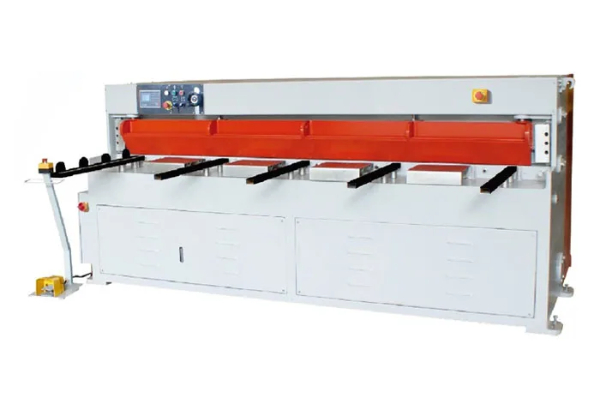
How Sheet Metal Folding Machines Handle Various Material Types and Thicknesses
- By:Metmac
- 2024-09-11
- 162
Sheet metal folding machines are versatile tools used in various industries to shape and form sheet metal into desired configurations. These machines play a crucial role in manufacturing processes, allowing for precise bending and folding operations on a wide range of materials and thicknesses. Understanding how sheet metal folding machines handle different materials and thicknesses is essential for optimizing their use and achieving desired results.
Materials Compatibility
Sheet metal folding machines are designed to handle a variety of materials, each with its unique properties and characteristics. Some of the most common materials used in sheet metal fabrication include:
Stainless Steel
Stainless steel is a durable and corrosion-resistant material that is commonly used in industries such as food processing, healthcare, and construction. Sheet metal folding machines equipped with specialized tooling and high-pressure clamping systems can effectively fold stainless steel sheets without causing damage or deformation.
Aluminum
Aluminum is a lightweight and high-strength material that is often used in aerospace, automotive, and consumer electronics industries. Sheet metal folding machines with precision tooling and specialized clamping devices can handle aluminum sheets, ensuring accurate bending operations and minimizing material distortion.
Galvanized Steel
Galvanized steel is a coated steel material that provides enhanced corrosion resistance. Sheet metal folding machines with hardened tooling and robust clamping systems are suitable for working with galvanized steel, allowing for precise bending without damaging the protective coating.
Thickness Considerations
In addition to material compatibility, sheet metal folding machines must also handle different material thicknesses. The thickness of the sheet metal determines the machine’s capacity, tooling requirements, and bending parameters.
Thin Sheet Metal
Thin sheet metal, such as those used in electronic components, medical devices, and packaging, requires specialized tooling and precise control to avoid deformation or tearing. Sheet metal folding machines with small-radius tooling and adjustable bending angles can effectively handle thin sheet metal.
Medium Thickness Sheet Metal
Medium thickness sheet metal, used in applications such as construction, automotive parts, and appliances, requires robust tooling and high-clamping forces. Sheet metal folding machines with heavy-duty frames, precision tooling, and specialized bending programs are suitable for handling medium-thickness sheet metal.
Thick Sheet Metal
Thick sheet metal is commonly used in structural applications, heavy machinery, and equipment manufacturing. Sheet metal folding machines with high tonnage capacity, thick tooling, and advanced control systems are necessary for handling thick sheet metal, ensuring precise bending and minimizing material fatigue.
Tooling and Clamping
To effectively handle different material types and thicknesses, sheet metal folding machines utilize various tooling and clamping mechanisms.
Tooling
The choice of tooling depends on the material type and thickness. V-dies and pressure pads are commonly used for folding operations, with the V-die forming the desired bend angle and the pressure pad providing counter-force to prevent material deformation. Specialized tooling, such as gooseneck dies and wiper dies, are also available for specific bending applications.
Clamping
Clamping systems ensure that the sheet metal is securely held during the bending process, preventing slippage or deformation. Manual clamps, hydraulic clamps, and magnetic clamps are commonly used in sheet metal folding machines, with the choice of clamping method depending on the material type and thickness.
Sheet metal folding machines are versatile and essential tools in manufacturing processes, capable of handling a wide range of material types and thicknesses. Understanding how these machines handle different materials and thicknesses is crucial for selecting the appropriate equipment, tooling, and clamping mechanisms. By choosing the right machine and parameters for the specific material and thickness, it is possible to achieve precise bending operations, minimize material distortion, and optimize production efficiency. Sheet metal folding machines continue to evolve, incorporating advancements in control systems, tooling technology, and material handling capabilities, enabling manufacturers to meet the growing demands of complex and precise metal fabrication applications.
-
Advanced Sheet Metal Rolling, Cutting, and Folding Machines for Efficient Fabrication
2025/10/22 -
High-Precision Sheet Metal Bending and Cutting Solutions for Modern Manufacturing
2025/10/22 -
High-Precision Solutions from Leading Sheet Metal Cutting Machine Manufacturers
2025/09/11 -
Reliable Sheet Metal Equipment for Sale to Support Precision Fabrication
2025/07/17
-
Advanced Sheet Metal Rolling, Laser Cutting, and Folding Machines for Precision Fabrication
2025/10/31 -
High-Performance Sheet Metal Bending and Cutting Machines for Modern Fabrication
2025/10/31 -
High-Quality Sheet Metal Equipment for Sale: Efficient Solutions for Modern Manufacturing
2025/10/31 -
High-Performance Sheet Metal Equipment for Sale: Forming and Shearing Solutions for Modern Fabrication
2025/10/22
-
A Guide to the Latest Innovations in Sheet Metal Folding Machines
2024/11/29 -
Key Features to Consider When Investing in a Sheet Metal Folding Machine
2024/11/28 -
Enhancing Precision with Advanced Sheet Metal Folding Machines
2024/11/27 -
How to Choose the Right Sheet Metal Folding Machine for Your Workshop
2024/11/26






